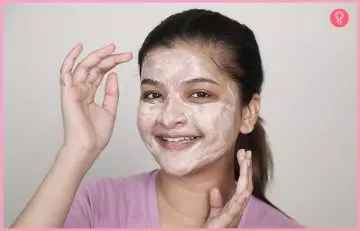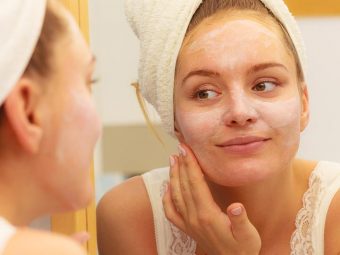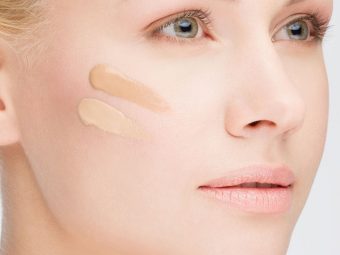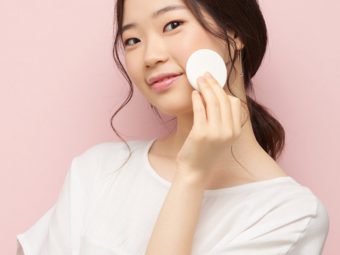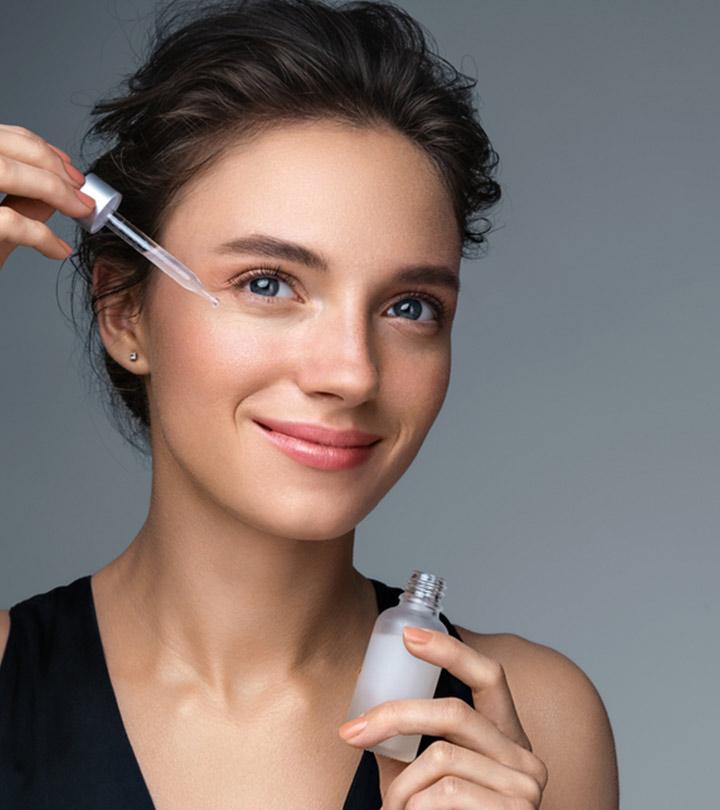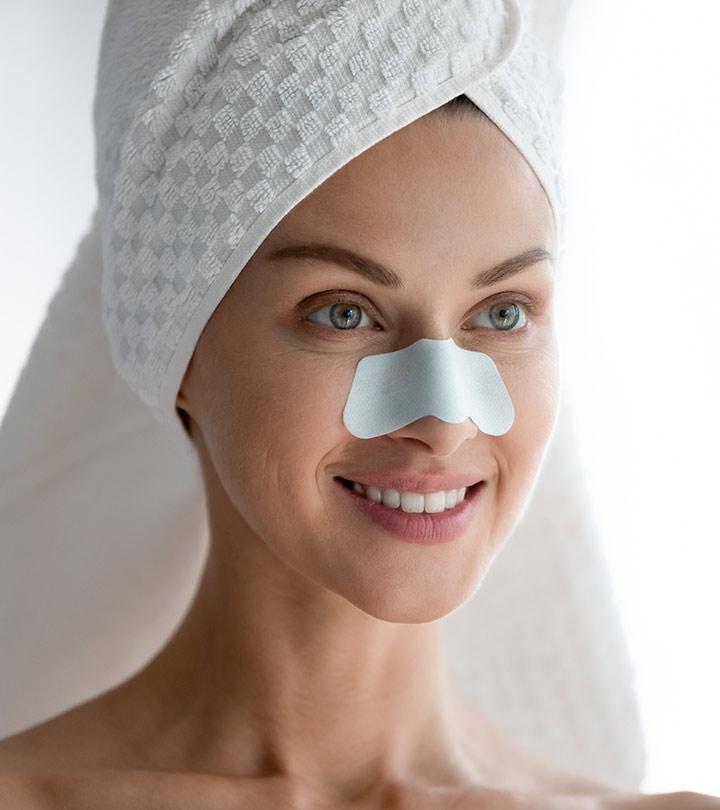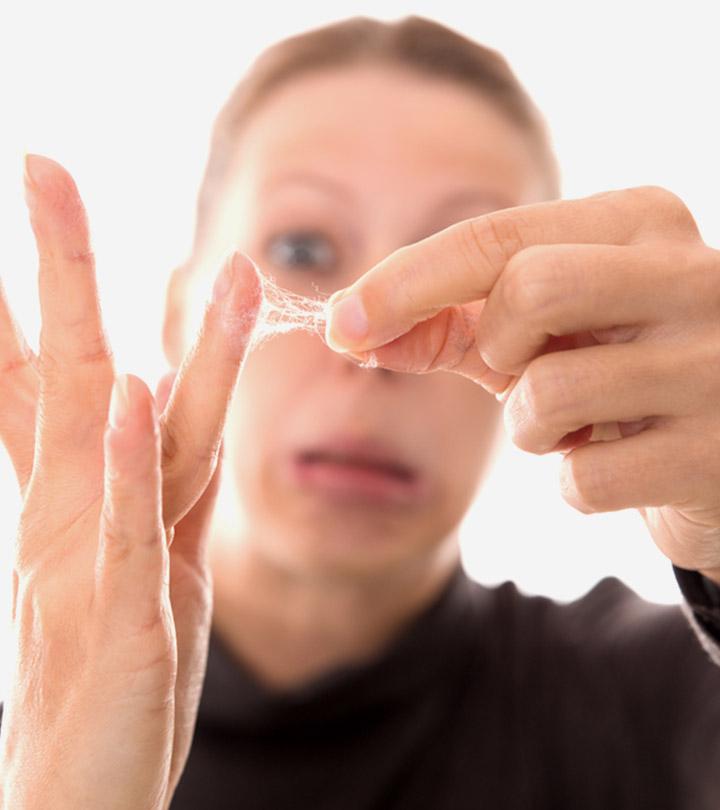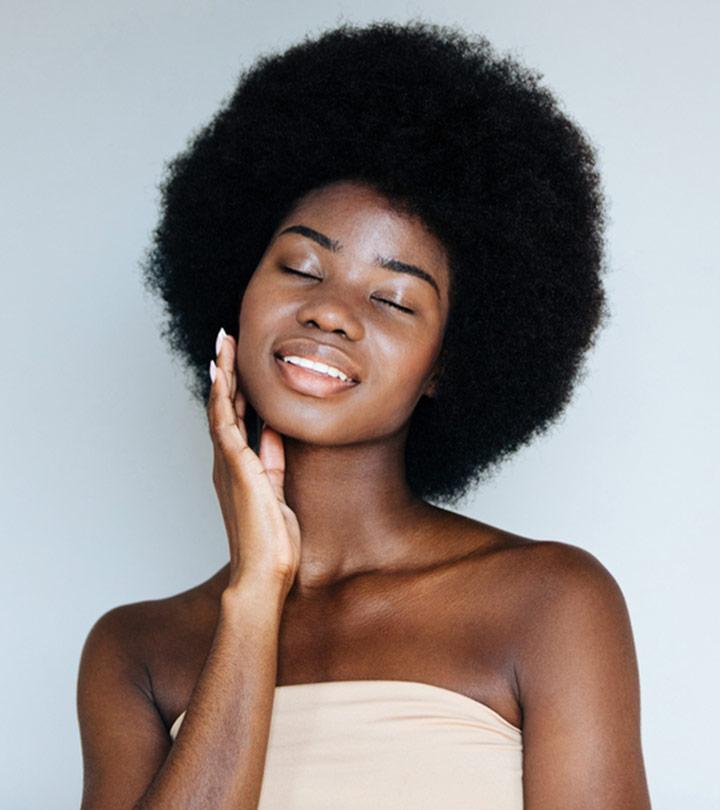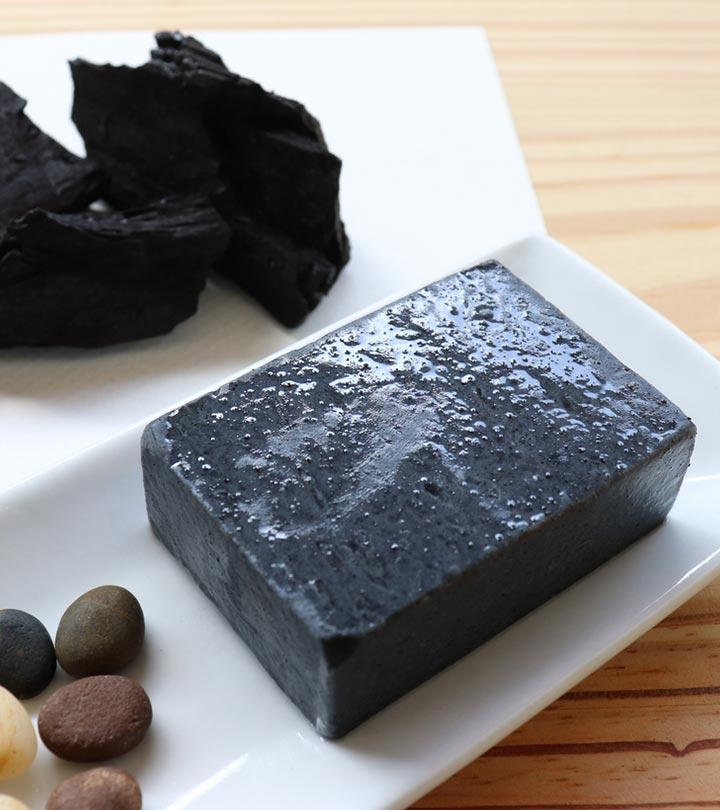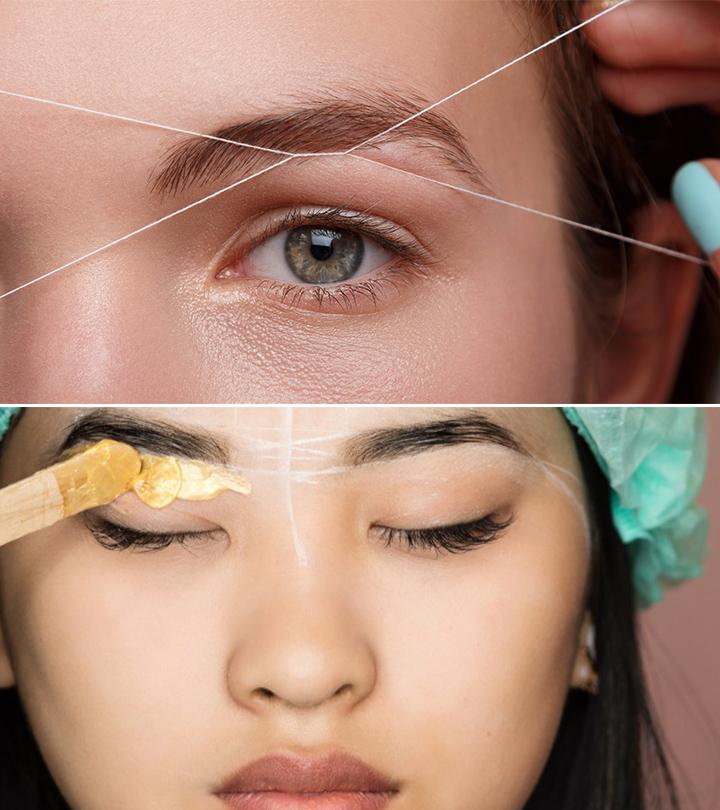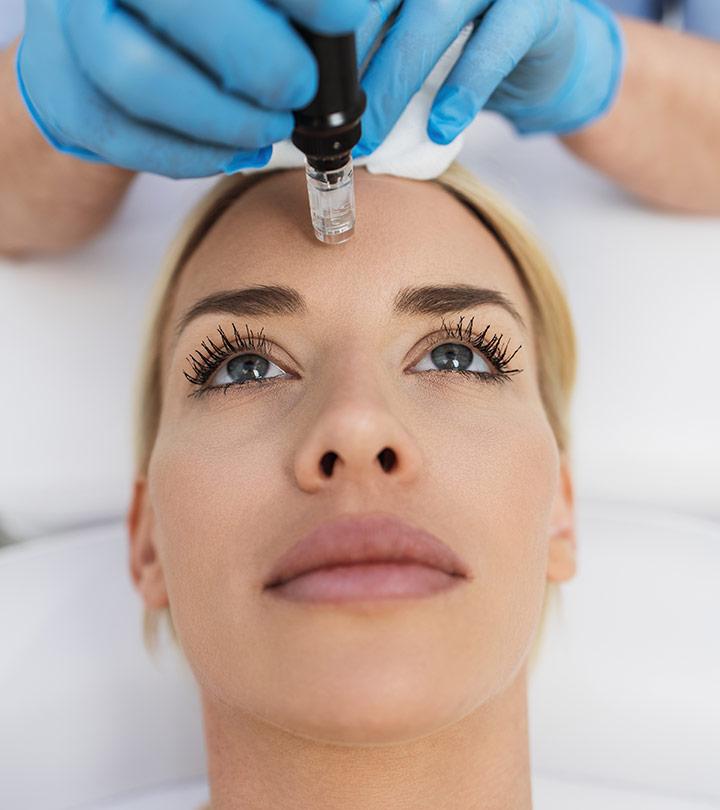How To Apply Your Skin Care Products In The Right Order
To know and follow the right order is to revolutionize your skincare game.

Image: Shutterstock
Are you frustrated that your skin-care products aren’t delivering the benefits you want? It’s possible that you’re not using them in the proper order. So, how to apply skin-care products correctly?
Keep in mind that the effectiveness of skincare products is heavily influenced by how they are utilized to your face. To get the most out of your skin care products, read this article to learn why layering is so important and how to apply them in the right order.
In This Article
Why Should You Apply Skin Care Products In Order?
It is because each skin care product has a different consistency and different concentrations of active ingredients. Applying them in the correct order ensures that the ingredients penetrate the skin layers.
As a general rule of thumb for a skincare routine for beginners, start with the thinnest consistency to the thickest cream or moisturizer. Toners have the thinnest consistency and should go first, and sleeping masks (for the night) and day creams and moisturizers (for the day) should be applied at the end. Here is an ultimate guide to how to layer your skin care products.
How To Apply Your Skin Care Products In Order: An Ultimate Guide
Daytime Skin Care Routine
Step 1: Cleanser (Double Cleansing)
Start your skincare routine order by double cleansing your face. First, use cleansing oil to dissolve all impurities on your skin and wipe it off. Then, use a gentle, water-based cleanser. Massage your face in a circular motion for a couple of minutes to ensure thorough cleansing, and then wash off with lukewarm water.
Step 2: Toner
Cleansing opens up your skin pores, which is why you need to apply a toner next. Toning minimizes the skin pores, gently scrapes away dead skin cells, helps balance the skin’s pH, and prepares it for the following products. Toners have a watery consistency and get absorbed quickly. Make sure you choose toners as per your skin concern.
If you have oily skin and enlarged pores, choose a toner with beta-hydroxy acids (BHA) or alpha hydroxy acids (AHA). If you have dry skin, look for toners containing hydrating ingredients like hyaluronic acid and rose water. For sensitive skin, use moisturizing toners with hyaluronic acid and glycerin in the skincare routine for sensitive skin.
Step 3: Serum
Serums are packed with potent and concentrated active ingredients and antioxidants. Look for ingredients like vitamins E, C, resveratrol, hyaluronic acid, and ceramides. These ingredients protect the skin from environmental and UV damage and keep it hydrated and protected. Serums are lightweight and get absorbed almost instantly.
Step 4: Eye Cream
Step 5: Spot Treatment
If you have acne-prone skin and use spot treatment creams in your skincare routine for acne, they go on your face now. Spot treatment creams contain potent ingredients like niacinamide, benzoyl peroxide, and salicylic acid for targeted remedy. Apply them to the affected area (like on the acne lesioni XSmall bumps on the skin clogged with oil and dead skin cells that appear mostly on one’s face. or the dark spot) and do no spread all over your face as that may dry out the skin.
Wait for a few minutes after applying the spot treatment and before you apply the moisturizer. Instead of a generic moisturizer, use something that is specifically formulated for your skin type. Choose a moisturizer with one potent ingredient or antioxidants that can repair, hydrate, and improve your skin’s texture. If you have oily skin, go for a lightweight, water-based moisturizer containing hyaluronic acid for hydration minus the grease. For dry and sensitive skin, choose moisturizers with antioxidants, ceramides, and peptides to soothe and soften your skin.
Step 6: Face Oils
Use face oils only if you have dry skin. Face oils are lightweight, get absorbed quickly, and keep the skin hydrated, soft, and smooth.
Avoid this step if you have oily skin and if your skin does not respond well to facial oils.
Step 7: Moisturizer
Moisturizers hydrate the skin and keep it smooth and soft. They come in lotion, cream, and gel forms. If you have dry, combination, and normal skin, opt for a cream-based formula. However, if you have oily skin, opt for water-based and gel-based lightweight moisturizers.
 Did You Know?
Did You Know?Step 8: Sunscreen
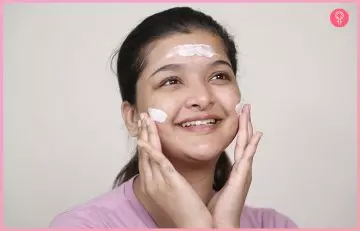
Stepping out without applying sunscreen is a sin, regardless of the season. It should be the last step in your daytime skin care routine. Go for a mineral sunscreen with at least SPF 30. Choose a sheer and lightweight formula that does not cause breakouts and blends easily under makeup.
A study conducted by AAD on over 1,000 US adults revealed how little the population knows about sun protection. Although 62% of the survey respondents gave themselves high marks for sun protection, 67% believed that SPF 30 sunscreens offer twice as much protection as SPF 15. Additionally, 63% and 33% of them reported getting a tan and sunburn, respectively.
 Trivia
TriviaStep 9: Makeup

Finish with makeup if you feel the need to cover any redness or uneven areas. Opt for a foundation (powder, liquid, or cream) or BB creams that are suitable for your skin tone.
Your skin naturally repairs itself at night. A good nighttime skincare routine for women provides additional nourishment to your skin. Here is how you should layer your skin care products for a perfect nighttime routine!
Night time Skin Care Routine
Step 1: Double Cleansing
Like your daytime routine, the nighttime routine needs to start with double cleansing, and this is non-negotiable. Remove your makeup with a cleansing balm or oil. The cleaning oil helps break down oil-based ingredients in your makeup, dirt, and grime. Follow it up with a gentle water-based cleanser to get rid of any residual makeup.
Step 2: Toner
You need to tone your skin at night to minimize the pores, exfoliate your skin, and get rid of any dead skin cells. Give it a few seconds to get fully absorbed before you move on to the next step. Also, a toner helps clean any residue from the skin and prep it for the next steps. For the night, use a toner that has hydrating ingredients like glycerin and hyaluronic acid. You may also use lactic acid toner for mild exfoliation.
Optional: You may also layer various skin care boosters like moisture mists and essences. Since all these are lightweight and enriched with active ingredients, apply them after the toner to nourish your skin.
Step 3: Hydrating Serums
Our skin repairs itself while we sleep. Hence, it is better to apply anti-aging serums (like retinol serums), medications, and exfoliating (AHA and BHA) treatments at night time. They plump up your skin and promote cell turnover rate to minimize the signs of aging, leaving you with a bright skin tone in the morning. You may also choose a hydrating serum with hyaluronic acid in your skincare routine for dry skin.
Step 4: Eye Cream
It’s time for eye cream! With the tips of your ring fingers, massage the eye cream gently around your eyes. Wait a few seconds for it to sink in. Use an eye cream with high antioxidant and peptide concentrations in your skincare routine for aging skin to improve fine lines, dark circles, and puffiness.
Step 5: Spot Treatment Creams
It is essential to use spot treatment creams twice a day to reduce the appearance of spots, scars, and inflammation. Apply these creams to the affected areas in small quantities to avoid dryness.
Step 6: Face Oil
Apply a few drops of face oil to prevent moisture loss and protect your skin. This is especially beneficial for dry skin. Use formulas that contain saturated or monounsaturated fatsi XHealthy dietary fats with a single carbon double bond that are commonly found in olive oil, nuts, and seeds. .
Step 7: Night Cream Or Sleeping Mask
Finish off the routine with night cream or a sleeping mask. If you have oily skin, add a gel-based, light, and hydrating cream in your skincare routine for oily skin so that it gets absorbed quickly and maintains your skin’s moisture balance through the night. Add cream-based and heavy formulas in your skincare routine for combination skin. Moisturizers keep the skin plump and youthful.
Follow the order as mentioned above for your day and nighttime skin care routine. However, consider these points to get the desired results.
What Should You Remember While Applying Skin Care Products? Dos And Don’ts
Layering is a crucial part of any skin care routine as this helps you reap the maximum benefit of each product you use in your skin care regimen. Remember, you want your skin to soak up the products’ ingredients. Therefore, even if you use fewer products and have a minimalistic skin care routine, using them in the wrong order will not give you any results. Also, do not rush as many products take time to get absorbed. You must wait for a few seconds (or minutes) between your skin care steps. Follow the skin care routine steps and the skincare tips discussed in the article to apply skin care products correctly and get the desired results.
| Dos | Don’ts |
|---|---|
| Invest in quality skin care products. | Do not use skin care products without cleaning your face. |
| Use products suitable for your skin type. | Do not use products that contain artificial fragrances, preservatives, chemicals, and silicones. |
| Do a patch test before using any product. | Do not use hot boiling water to wash your face. |
| Start with the products with the thinnest consistency. | Do not use greasy products on oily and acne-prone skin. |
| Observe how your skin reacts to skin care products. | Do not use bar soap to wash your face. |
| Always check the pH levels of the skin care products. | Do not overuse exfoliators and products containing AHAs and BHA. Use them sparingly. |
Infographic: The Right Way To Pair & Layer Skin Care Products
You now know all the right products to include in your daily and night routines. But you may find yourself wondering what the best products are that can be paired together and what order to use them. Certain products increase the skin’s ability to absorb others, and is one reason they work well together. Check out the following infographic to learn which products you can pair and layer together for the best results.

Illustration: StyleCraze Design Team

Image: Stable Diffusion/StyleCraze Design Team
Frequently Asked Questions
Should I rub or pat a serum?
It would be best if you did not rub a serum on your face. Instead, you should always press and pat it into your skin to ensure it is thoroughly absorbed.
Can I skip the moisturizer after serum?
No. Moisturizing is an essential part of skin care. It protects your skin while also moisturizing it. Additionally, although some serums include hydrating ingredients, you must apply a moisturizer on top of the serum to seal moisture into the skin.
Should I apply the toner with my hands?
Yes, the toner absorbs and works best when applied with clean hands. Applying a toner with your hands by delicately patting it into the skin allows it to be better absorbed.
Key Takeaways
- Applying skincare products in the right order is essential to ensure the ingredients penetrate the skin layers better.
- This also is important as different skin care products have varied consistencies and concentrations of active ingredients.
- As a general rule, start with a product with the thinnest consistency and move to the thickest cream or moisturizer.
- For both day and nighttime routines, you must start by double cleansing the face and following up with a toner, serum, spot treatment, and moisturizer.
Learn the right way to apply skin care products from professionals! Get tips on how to use the right products for your skin type and achieve glowing, healthy skin. Watch the video below!


















